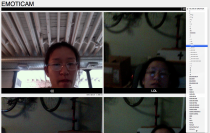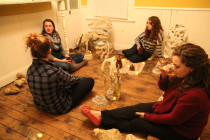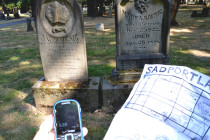Project Documentation

a-reading (glasses) by Judeth Oden Choi and Vivek Sangubhotla (final project)
a-reading (glasses) Imagine a pair of reading glasses that allow you to read more immersively, more critically, more to your liking. Imagine an augmented reality experience that allows you to keep the best part of reading the newspaper: the smell

a-reading (glasses) by Judeth Oden Choi and Vivek Sangubhotla (final project)
a-reading (glasses) Imagine a pair of reading glasses that allow you to read more immersively, more critically, more to your liking. Imagine an augmented reality experience that allows you to keep the best part of reading the newspaper: the smell
AR for a critical “how to manual”
If one major use of AR so far has been in creating how-to’s, particularly highly technical (or military) how to’s… YouTube / Bloomberg Business – via Iframely (This is less advanced, but you can see more of the interface:) YouTube
AR for a critical “how to manual”
If one major use of AR so far has been in creating how-to’s, particularly highly technical (or military) how to’s… YouTube / Bloomberg Business – via Iframely (This is less advanced, but you can see more of the interface:) YouTube
Humanity at Sea, Ideation
In this sketch we will explore our desire to make an image real, to make it known and understood, and our frustration with the limits of that knowledge and experience.
Humanity at Sea, Ideation
In this sketch we will explore our desire to make an image real, to make it known and understood, and our frustration with the limits of that knowledge and experience.

“Emoticam” by Dan Sakamoto (2013)
Emoticam is an application that runs in the background of a user’s computer at all times, monitoring what they type. Anytime it detects an emoticon, or some other expression of real-world emoting, it takes a photo of the user’s face and uploads it to the project website. Visitors can view all images, or choose to filter to one specific term.

“Emoticam” by Dan Sakamoto (2013)
Emoticam is an application that runs in the background of a user’s computer at all times, monitoring what they type. Anytime it detects an emoticon, or some other expression of real-world emoting, it takes a photo of the user’s face and uploads it to the project website. Visitors can view all images, or choose to filter to one specific term.

“Catalyzing Conversation I” by Becca Epstein (2015)
I created an installation where people were invited to sit and talk. The exhibition took place during a DIY music show in my house which doubles as the venue Station P. The installation included hand sewn pillows, paper sculptures, tea, and projected video. This piece allowed me to observe the way in which people are willing to interact.

“Catalyzing Conversation I” by Becca Epstein (2015)
I created an installation where people were invited to sit and talk. The exhibition took place during a DIY music show in my house which doubles as the venue Station P. The installation included hand sewn pillows, paper sculptures, tea, and projected video. This piece allowed me to observe the way in which people are willing to interact.

“Sad Portland” by MYNDWYRM/Ben Gansky (2012)
Sad Portland is an phone-based interactive piece made for the South-East neighborhood of Portland. A flyer depicts a map of the area, highlighting a cemetery, along with a drawing of two tombstones whose numerals have been replaced with symbols. At

“Sad Portland” by MYNDWYRM/Ben Gansky (2012)
Sad Portland is an phone-based interactive piece made for the South-East neighborhood of Portland. A flyer depicts a map of the area, highlighting a cemetery, along with a drawing of two tombstones whose numerals have been replaced with symbols. At

“Audionce” by Alicia Iott (2015)
Audionce is an iOS application designed to allow users to record and place sounds at their current geolocation. Once a sound is submitted, other app users within a close range of the submit location can hear the sound. This app

“Audionce” by Alicia Iott (2015)
Audionce is an iOS application designed to allow users to record and place sounds at their current geolocation. Once a sound is submitted, other app users within a close range of the submit location can hear the sound. This app
